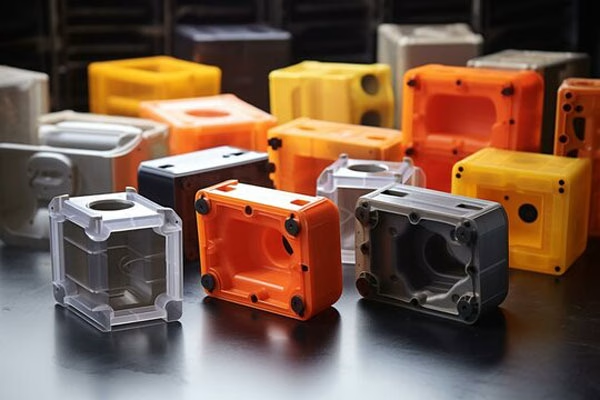Injection molding and die cast molding have both been with us for a long time and there are many arguments for and against each process. As a molding method, injection molding has many fans and has been refined to the point of perfection. However, it does have its own limitations that can be addressed by other methods. Below, we discuss both processes and their pros and cons.

Plastic injection molded parts
Injection molding creates finished parts, mostly made of a resin-type material, by forcing molten plastic into a mold, which is then left to cool and harden. The produced parts can be of virtually any size, although it is most commonly used to produce large quantities of mass-produced items such as plastic bottles or parts for the automotive industry, among many others.
Injection molding was born from the die cast method which used metal in a similar way to plastic to mass produce items at a low cost. The metals used were mostly zinc, aluminium, magnesium, and brass, with just about any part able to be cast from almost any metal. The most common and popular metals used for die casting, due to its lightness and malleability is aluminium. Dies used in the casting process are stronger than the molds used in the permanent die process so as to withstand the force of the injections into them. This high-pressure process produces a durable, high strength product that is often used for mechanical engineering purposes such as automotive engines and other high stress and temperature functions.
Die casting, for its many benefits, does have many limitations and these include limited part size, high initial tooling costs and a fluctuating cost of raw materials that can add substantially to the cost of production. Injection molding, on the other hand, produces parts that are light weight, impact and corrosion resistant at a very low cost, with very little change in the cost of the raw materials.
The benefits of injection molding have gained in popularity over the years because of the advantages it offers over traditional die casting manufacturing methods. Namely, the immense amount and variety of low cost, affordable products that are made from plastics today are virtually limitless. There are also minimal finishing requirements. This being the case, it is going to be dependent on the engineer and customer to decide which type is more suitable for their particular requirements before they commence manufacture, notwithstanding the cost, quality and use of the final part.
